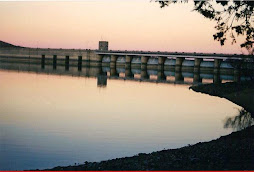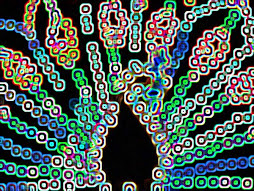Tepco Confirms Meltdown of Reactors The truth, after a 70 day delay. What will they admit next?
Tokyo Electric Power Co. confirmed a meltdown of fuel rods in two more reactors at its Fukushima nuclear plant, which has been emitting radiation since an earthquake and tsunami knocked out power and cooling systems.
Fuel rods in the No. 3 unit started melting on March 13 and those in the No. 2 reactor on March 14, Junichi Matsumoto, a spokesman at the company known as Tepco, told reporters in Tokyo today. The fuel dropped to the bottom of the pressure vessel after melting although the damage to the vessel is “limited,” he said.
Tepco raised the possibility of more extensive damage than assumed at the reactors when it announced last week, more than two months after the disaster, that fuel rods in the No. 1 reactor had melted within 16 hours of the quake on March 11. Tepco’s analysis is catching up with U.S. assessments in early days of the crisis that indicated damage to the station was more severe than Japan officials suggested.
The meltdown of the cores is the “greatest at the No. 1 reactor, followed by the No. 3 unit and then No. 2,” Matsumoto said. The analysis of the damage became possible “after data from the central control room was retrieved,” he said.
UN atomic watchdog experts arrive in Japan They are JUST NOW arriving? This can't be right, can it?
A team of specialists from the UN atomic watchdog arrived in Japan on Monday to join other international experts investigating Japan's nuclear crisis.
A six-strong delegation from the International Atomic Energy Agency (IAEA) flew to Tokyo's Narita airport from Vienna in preparation for a fact-finding mission from May 24 to June 2.
In all, a 20-member mission will compile a report on the emergency to be presented to IAEA member states next month at a ministerial-level conference in Vienna.
Tokyo has said the IAEA team is likely to visit the Fukushima Daiichi nuclear power plant, which was crippled by an earthquake and tsunami on March 11 and has leaked high levels of radiation into the environment.
But Jim Lyons, director of the IAEA's division of nuclear installation safety, said the itinerary was not finalised.
"We are going to be mostly in Tokyo but I think we're going to try to visit the site," Lyons told reporters ahead of their departure from Vienna. "That's the plan."
The next time a plane crashes, a plane carrying, say, six nuclear reactors worth of fuel and spent fuel, imagine the FAA showing up 72 days after the crash, not do anything, as this is a "fact finding mission," state that it's "likely" they'll visit the crash site, and the only action taken will be a presentation at a ministerial level conference. You think they'd get away with it?
The IAEA is less a "watchdog," and more of a "watchin' dog," as in "He just sits there, watchin' it happen.."
The Implications of the Fukushima Accident on the World's Operating Reactors Video from Arnie Gundersen at Fairewinds.com via Rense.
Japan reports more radiation leakage
At least 250 tons of radioactive water spilled into the Pacific Ocean from Japan's earthquake-damaged Fukushima nuclear power plant, officials said.
The Tokyo Electric Power Co. said the radiated water leaked for 41 hours beginning May 10 from the No. 3 reactor at the site, where four of six reactors were damaged in the magnitude-9 earthquake and ensuing tsunami, Kyodo News reported.
Nuclear plant workers suffer internal radiation exposure after visiting Fukushima The Mainichi Daily News, via Rense. Excerpts:
The government has discovered thousands of cases of workers at nuclear power plants outside Fukushima Prefecture suffering from internal exposure to radiation after they visited the prefecture, the head of the Nuclear and Industrial Safety Agency said.
Most of the workers who had internal exposure to radiation visited Fukushima after the nuclear crisis broke out following the March 11 quake and tsunami, and apparently inhaled radioactive substances scattered by hydrogen explosions at the Fukushima No. 1 Nuclear Power Plant.
The revelation has prompted local municipalities in Fukushima to consider checking residents' internal exposure to radiation.
Nobuaki Terasaka, head of the Nuclear and Industrial Safety Agency, told the House of Representatives Budget Committee on May 16 that there were a total of 4,956 cases of workers suffering from internal exposure to radiation at nuclear power plants in the country excluding the Fukushima No. 1 Nuclear Power Plant, and 4,766 of them involved workers originally from Fukushima who had visited the prefecture after the nuclear crisis. Terasaka revealed the data in his response to a question from Mito Kakizawa, a lawmaker from Your Party.
Tokyo Electric Power Co. confirmed a meltdown of fuel rods in two more reactors at its Fukushima nuclear plant, which has been emitting radiation since an earthquake and tsunami knocked out power and cooling systems.
Fuel rods in the No. 3 unit started melting on March 13 and those in the No. 2 reactor on March 14, Junichi Matsumoto, a spokesman at the company known as Tepco, told reporters in Tokyo today. The fuel dropped to the bottom of the pressure vessel after melting although the damage to the vessel is “limited,” he said.
Tepco raised the possibility of more extensive damage than assumed at the reactors when it announced last week, more than two months after the disaster, that fuel rods in the No. 1 reactor had melted within 16 hours of the quake on March 11. Tepco’s analysis is catching up with U.S. assessments in early days of the crisis that indicated damage to the station was more severe than Japan officials suggested.
The meltdown of the cores is the “greatest at the No. 1 reactor, followed by the No. 3 unit and then No. 2,” Matsumoto said. The analysis of the damage became possible “after data from the central control room was retrieved,” he said.
UN atomic watchdog experts arrive in Japan They are JUST NOW arriving? This can't be right, can it?
A team of specialists from the UN atomic watchdog arrived in Japan on Monday to join other international experts investigating Japan's nuclear crisis.
A six-strong delegation from the International Atomic Energy Agency (IAEA) flew to Tokyo's Narita airport from Vienna in preparation for a fact-finding mission from May 24 to June 2.
In all, a 20-member mission will compile a report on the emergency to be presented to IAEA member states next month at a ministerial-level conference in Vienna.
Tokyo has said the IAEA team is likely to visit the Fukushima Daiichi nuclear power plant, which was crippled by an earthquake and tsunami on March 11 and has leaked high levels of radiation into the environment.
But Jim Lyons, director of the IAEA's division of nuclear installation safety, said the itinerary was not finalised.
"We are going to be mostly in Tokyo but I think we're going to try to visit the site," Lyons told reporters ahead of their departure from Vienna. "That's the plan."
The next time a plane crashes, a plane carrying, say, six nuclear reactors worth of fuel and spent fuel, imagine the FAA showing up 72 days after the crash, not do anything, as this is a "fact finding mission," state that it's "likely" they'll visit the crash site, and the only action taken will be a presentation at a ministerial level conference. You think they'd get away with it?
The IAEA is less a "watchdog," and more of a "watchin' dog," as in "He just sits there, watchin' it happen.."
The Implications of the Fukushima Accident on the World's Operating Reactors Video from Arnie Gundersen at Fairewinds.com via Rense.
Japan reports more radiation leakage
At least 250 tons of radioactive water spilled into the Pacific Ocean from Japan's earthquake-damaged Fukushima nuclear power plant, officials said.
The Tokyo Electric Power Co. said the radiated water leaked for 41 hours beginning May 10 from the No. 3 reactor at the site, where four of six reactors were damaged in the magnitude-9 earthquake and ensuing tsunami, Kyodo News reported.
Nuclear plant workers suffer internal radiation exposure after visiting Fukushima The Mainichi Daily News, via Rense. Excerpts:
The government has discovered thousands of cases of workers at nuclear power plants outside Fukushima Prefecture suffering from internal exposure to radiation after they visited the prefecture, the head of the Nuclear and Industrial Safety Agency said.
Most of the workers who had internal exposure to radiation visited Fukushima after the nuclear crisis broke out following the March 11 quake and tsunami, and apparently inhaled radioactive substances scattered by hydrogen explosions at the Fukushima No. 1 Nuclear Power Plant.
The revelation has prompted local municipalities in Fukushima to consider checking residents' internal exposure to radiation.
Nobuaki Terasaka, head of the Nuclear and Industrial Safety Agency, told the House of Representatives Budget Committee on May 16 that there were a total of 4,956 cases of workers suffering from internal exposure to radiation at nuclear power plants in the country excluding the Fukushima No. 1 Nuclear Power Plant, and 4,766 of them involved workers originally from Fukushima who had visited the prefecture after the nuclear crisis. Terasaka revealed the data in his response to a question from Mito Kakizawa, a lawmaker from Your Party.









































































































No comments:
Post a Comment